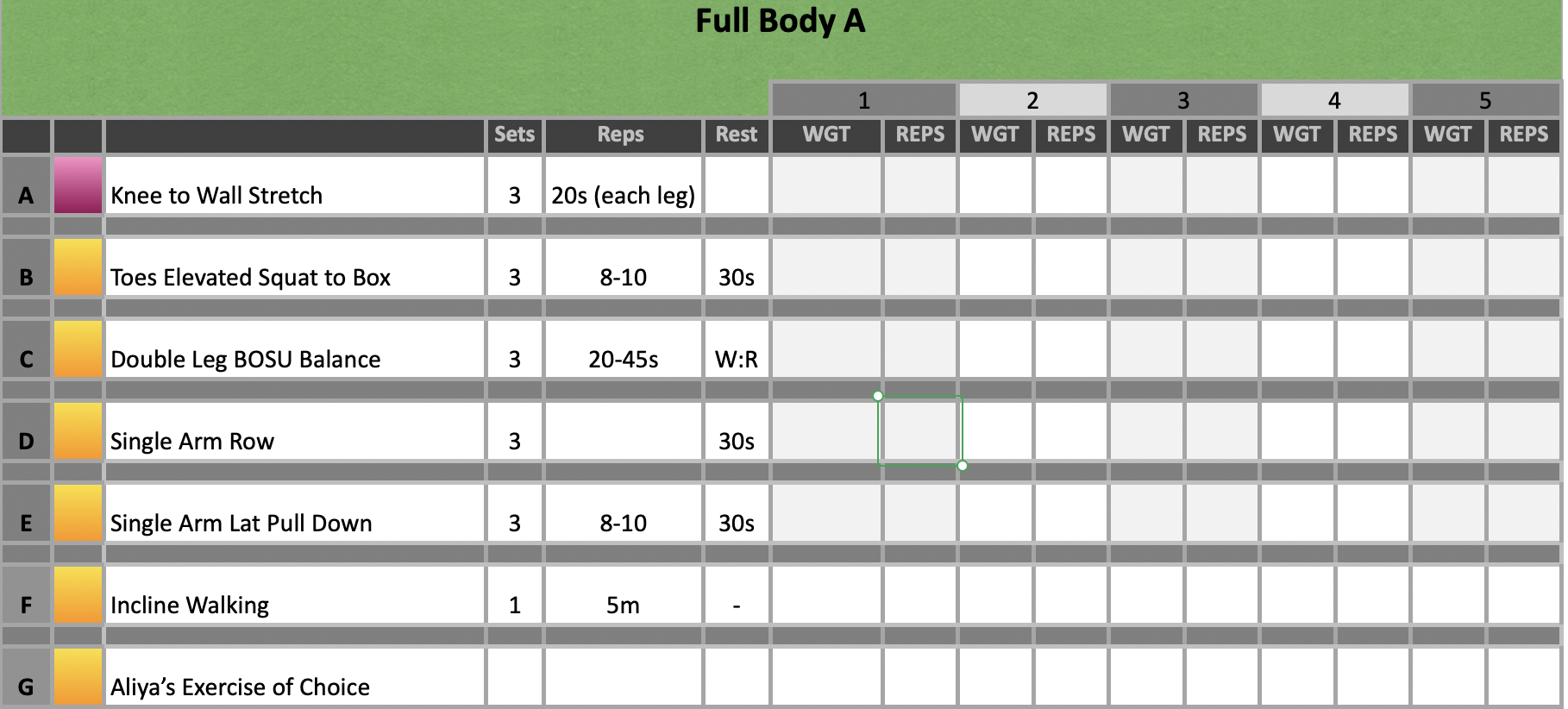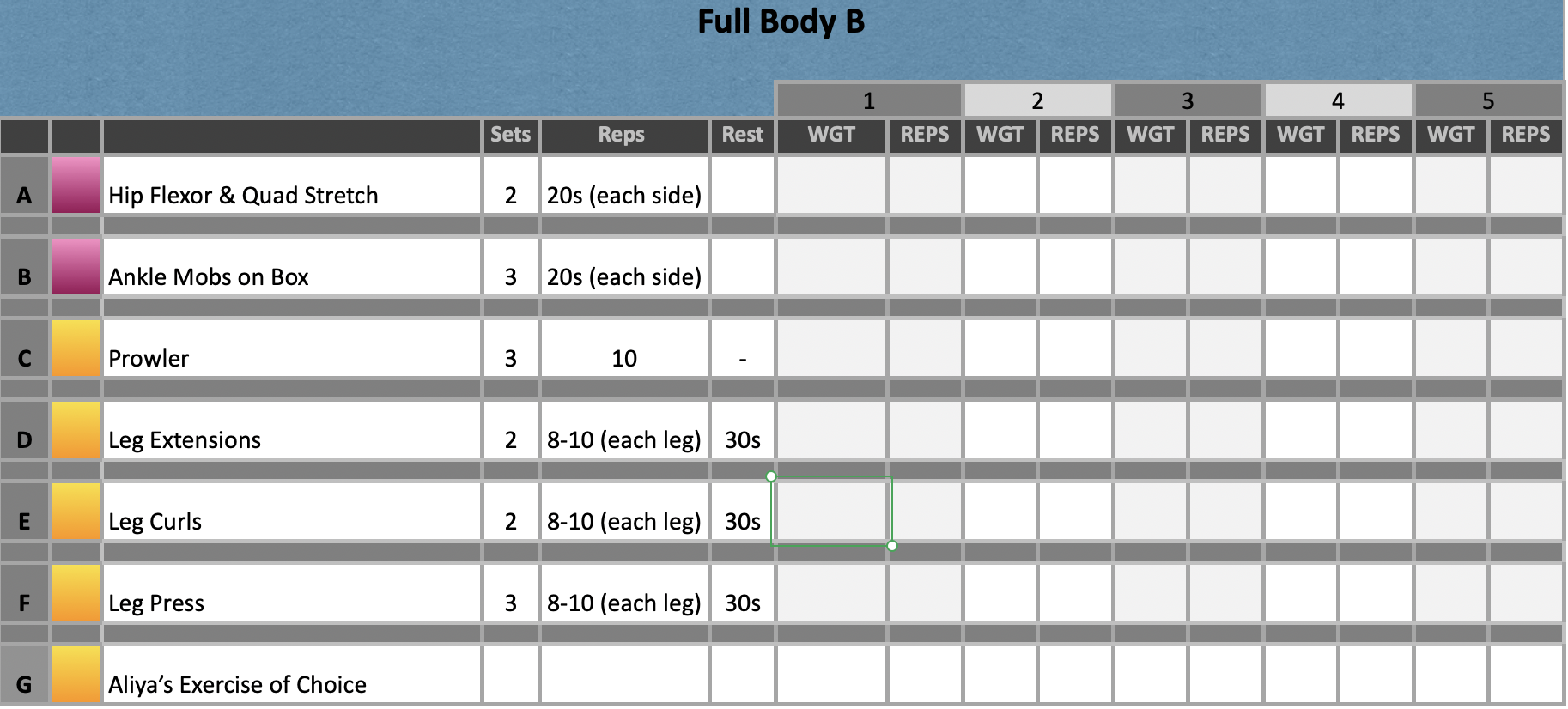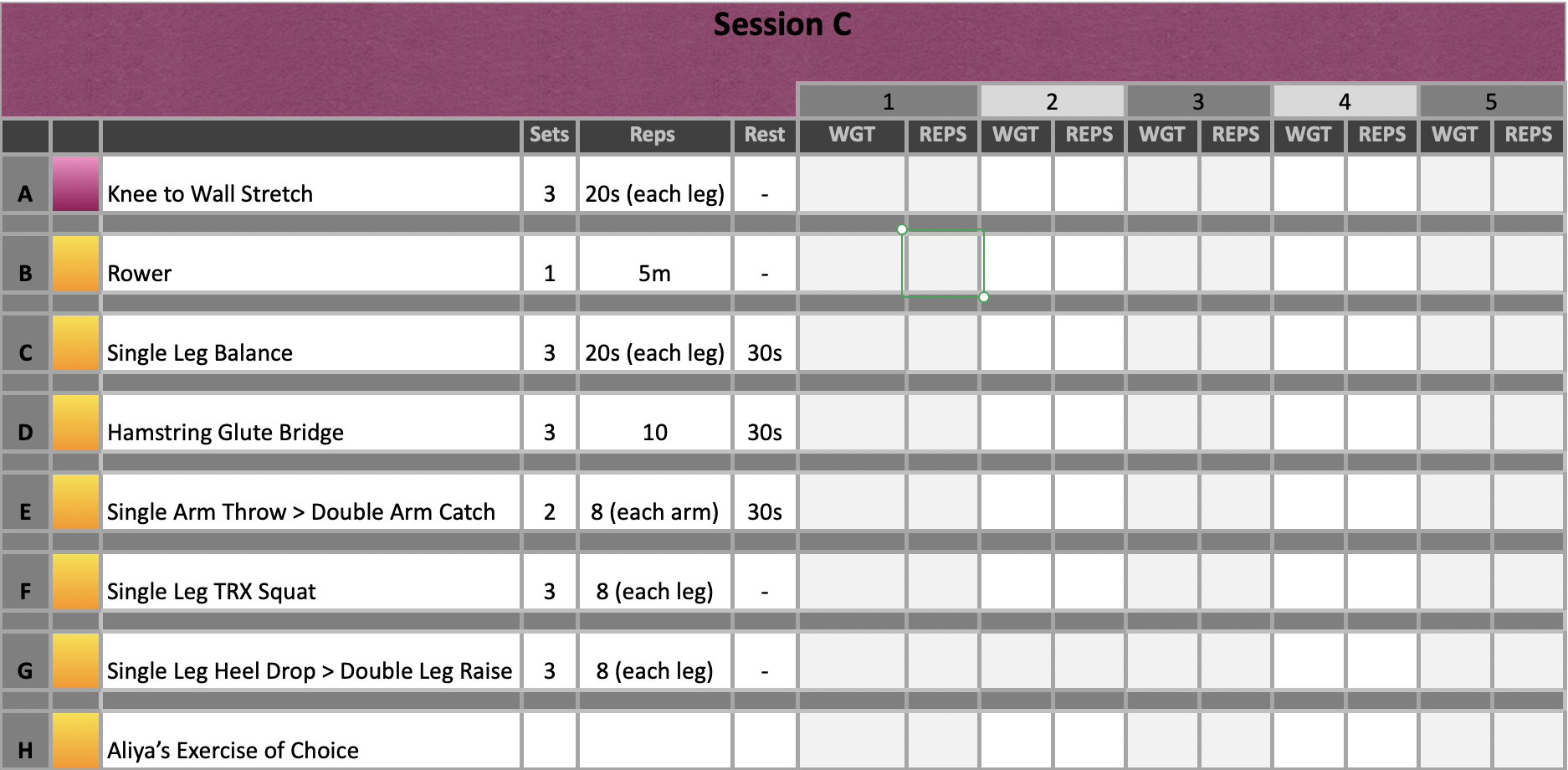Monday 11th October 2021 – Monday 13th November
Hours: 5 (10 x 30 minute sessions over 10 weeks)
Updated Hours: 15
Patient decided to continue with rehabilitation and completed a further 10 hours at 2 x 45 minutes session per week.
Patient presentation:
- 10 year old girl with right hemiplegia
- She has a leg length discrepancy due to excessive tone in her calves which causes tip-toe walking.
- Parents want to focus on stretching the calf complex, strengthening the right lower limb and increasing adherence to exercises.
- The patient wants to improve core and upper limb strength.
- Her right upper limb is weak – she has poor grip strength and inhibited motor skills
- The upper limb in currently not a focus at the patient has had botox and all stakeholders want to capitalise on its effects.
Reflection Model
- Gibbs Reflective Cycle 1988
Exercise Prescription


 What Happened?
What Happened?
- Lots of single leg work was included in the sessions and led by the affected limb, i.e. right leg working weight was established and this was also used for the left. The aim of these exercises were to improve strength of the right hand side and improve balance and stability. Although balance and stability was not specifically mentioned by either parent or child her abnormal gait puts her at risk of falls. Backwards walking has been shown to improve balance and mobility is children with CP (Choi, et al., 2021); however, as the participant was unfamiliar we started with forwards walking, which is still beneficial for balance and mobility.
- The patients right foot was difficult to position for certain exercises such as stretching. She has an inability to dorsiflex the foot and the ankle also falls into excessive pronation. Conservative management for treating these foot problems is stretching of the calf complex (Sees and Miller., 2013). However, interventions such as botox and splinting are required for significant changes, which the patient is due to have at Christmas time.
What were you thinking and feeling?
- I felt really supported by the parents in designing a programme for this patient. After every physio appointment they would send details across of recommended exercises that we could incorporate into sessions.
- I was quite concerned about how to make the sessions fun as the patient is very young and a commercial gym setting isn’t necessarily designed for children. However, I benefited from the novelty of her never having used a gym before. So, we would always spend time during a session doing an exercise she really enjoyed or wanted to try – even if it didn’t relate to her rehab. This may not last long and as this is going to be a long standing client, I will need to ensure I find fun and engaging tasks that still address the primary rehabilitation goals.
What was good and bad about the experience?
- Sessions are only 30 minutes and 1 session a week – this time constraint does mean that there is less opportunity for repetition learning which helps to improve neuroplasticity.
- The novelty of the gym can prove as a distraction at times and at 10 years old sometimes the patient is more interested in watching what is going on around her than the exercise she is currently trying to perfect.
- The patient really enjoys the sessions and the parents are happy that she is performing some rehab exercises that she is reluctant to do for them.
Analysis
- Repetition learning is key for helping to ‘rewire the brain’ and potentially improve function of the lower limb. However, tasks need to be repeated frequently so I need to establish a way to encourage the patient to do some exercises at home.
- Backwards walking needs to be incorporated into the programme soon to aim for improved benefits in balance and stability. However, the patient doesn’t like to feel different and walking backwards in a gym is certainly not a normal thing to see. If she becomes uncomfortable we may need to use a different setting such as a quiet corridor or sports hall. Furthermore, going backwards on the cross trainer may have similar effects or at the very least target the quadricep of the right leg that have suffered atrophy due to her abnormal gait.
Conclusion
- The patient is receiving botox over Christmas followed by 6 weeks in a splint to help address the excessive tone is her calf. Whilst the patient is not attending sessions I will focus on exploring more literature of physical therapy for children with hemiplegia. I will also work on creating an adherence diary for the patient to see if this could increase her exercise uptake.
Revisiting Reflection
References
- Choi, J.-Y., Son, S.-M., & Park, S.-H. (2021). A Backward Walking Training Program to Improve Balance and Mobility in Children with Cerebral Palsy. Healthcare, 9(9), 1191. MDPI AG. Retrieved from http://dx.doi.org/10.3390/healthcare9091191